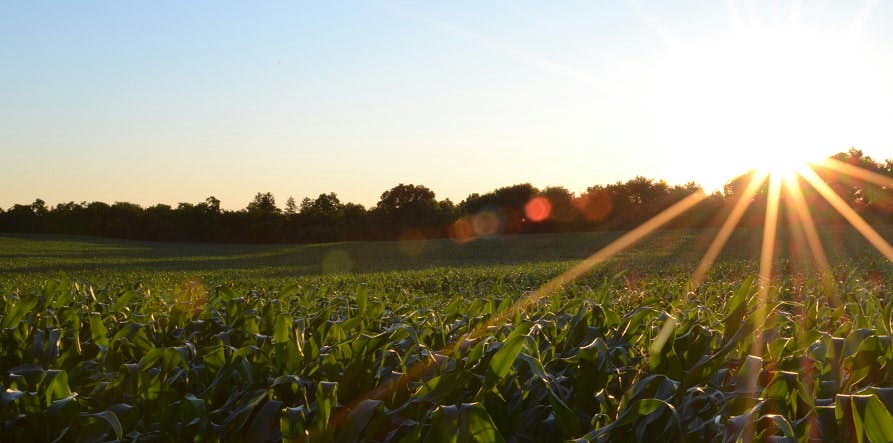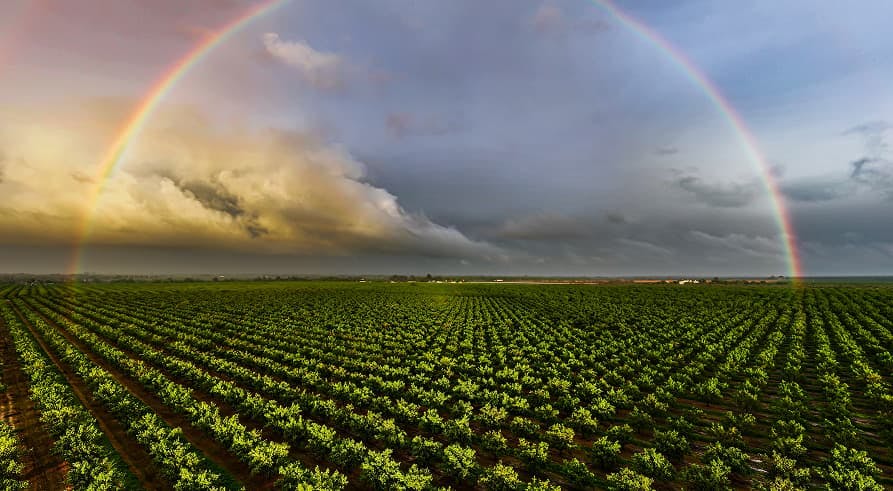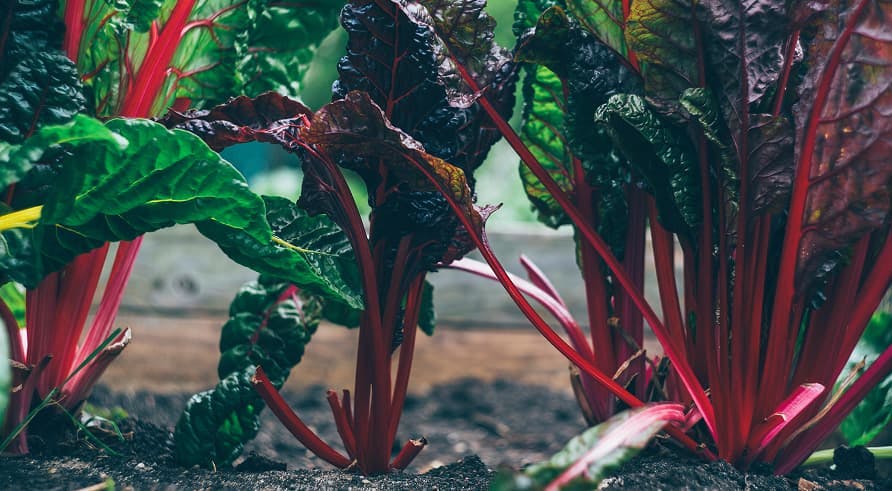ESG / CSR
Industries
Food Security in a Changing World



In the midst of climate change, we often think of how rising temperatures will affect our health, travel, and even school – but food security often falls on the backburner.
Food security is imperative as it allows us to feed our growing global population, especially in developing countries where it may be harder to meet the supply and demand of food.
In this article, we’ll break down what food security is, why it’s important, how it is threatened, and how we can protect it.
What is food security?
Food security refers to when everyone around the world has access to safe and nourishing food – to the extent that the food available can meet all of their dietary needs and allow for a healthy lifestyle.
As one of the most essential elements to life, food is a pivotal resource to ensure that our growing population can thrive – which means that food security can prove especially especially difficult in the midst climate change where resources and agriculture are challenging.
Food security can impact the following:
- Developing countries
- Farmers or workers in agriculture
- Low-income communities
What are the 4 pillars of food security?
There are four main pillars to food security, including availability, access, utilization, and stability.
Here are the four main aspects of food security broken down:
- Availability – Food availability refers to the available “supply” of food, which is dependent on the current scale of global food production, net trade, and the nature of our global economy such as via the current regulations on the importation and exportation of food
- Access – Think of having a gym membership card, but that the gym is consistently closed. Having the gym be physically available to you, but being left without access to enter makes it almost useless for your fitness journey – in the same way that a sufficient level of food supply does not guarantee that a nation can have access to the appropriate amount of food needed to feed their population at all times. In order to combat the threat of a lack of access to food security, nations will often focus on policy and markets to ensure food is accessible.
- Utilization – This refers to how our bodies process and extrapolate nutrients from the food that has been acquired. As a result, food security does not only entail the availability and access to food – but how the nutrient intake offered by the accessible food. This means that a large amount of food must not only be acquired, but a diverse array of food to ensure that all micro and macronutrients are met. Food preparation and distribution of food are also vital elements to utilization in food security.
- Stability – Think of running a marathon: even if you have been training for a long time, there is no guarantee that you will be able to run a marathon in the same time a year from now. The same goes for stability in food security, seeing as even if your food intake is sufficient today – that level of accessibility could change at any given moment due to natural disasters, economic challenges, and political factors. This is being demonstrated even in wealthy nations right now such as the United States, where grocery prices continue to skyrocket.
Overall, food security isn’t just about having a large quantity of food – but ensuring that the quality amounts to nutritious, safe food that allows for enough calories everyday to promote a sufficient lifestyle.

Why is food security important?
Food security is important since it is essential for humans to live, survive and thrive.
In fact, when the agricultural sector experiences growth – it can be twice as effective at helping to reduce the negative effects of food security and poverty than other industries.
Since food security is tied to poverty, this means that food security not only impacts those living in the nation without sufficient food supply – but it can impact the nation’s ability as a whole to further develop their economy or agricultural market.
In other words, food security serves as an essential path towards a country's economic growth – and without sufficient access and availability to food, it can be challenging for nations to establish themselves in this way.
Here are some additional reasons why food security is important:
- Create New Jobs – Seeking to obtain greater food security often equates to increased economic growth and the creation of new jobs.
- Avoid Poverty – Having greater access to food means that people in low-income communities will be well-fed and nourished, allowing them to improve their job performance and work their way out of poverty in the first place.
- Benefit the Global Economy – Trade opportunities are bound to increase if a nation makes a greater effort to improve their food security, as there will be more produce and various goods to trade with other nations.
- Improved Healthcare – A greater access to nutritious food can help to avoid diseases and illnesses, ultimately leading to a reduced need for extensive and consistent healthcare visits.
As a whole, food security is imperative as it can help a nation to further its economic standing, help improve the health of a country’s citizens, and more.

How is food security threatened by climate change?
Food security is greatly threatened by climate change, seeing as increased droughts, hurricanes, and rising temperatures make it difficult to produce a quantitative and qualitative harvest.
As climate change continues to worsen, food security will only be put more at risk – making it essential now to fight against the negative effects of climate change before the damage is irreversible and it is next to impossible to grow any produce and ensure global food security.
Here’s a breakdown of climate change is affecting global food security:
- Crop Yields – Increased temperatures are having a profound effect on rainfall, which elicit droughts and flooding that can cause crop damage, deteriorate soil, and overall make it exceptionally difficult for crops to grow.
- Water Scarcity – Skyrocketing temperatures contribute to excessive evaporation, melting glaciers, and altered river flows – all of which result in reduced water availability, which is essential for effective farming.
- Livestock and Fisheries – Extreme heat, in the same way it can impact humans, livestock could be impacted by climate change. In addition to this, rising ocean acidity can impact fish populations and marine ecosystems.
- Increasing Grocery Prices – As by the law of supply and demand, the more sparse a good or service – the more expensive it will become. This is why grocery bills are skyrocketing in several countries across the world. In addition to this, supply chain disruptions as a result of natural disasters can elicit food shortages – making groceries even more expensive.
The table below will demonstrate additional ways that climate change impacts food security:
| Impact | Description |
|---|---|
| Pest and Disease Spread | Warmer temperatures and changing ecosystems allow pests and crop diseases to expand into new regions, reducing agricultural productivity. |
| Soil Degradation | Increased rainfall intensity and droughts lead to soil erosion and loss of nutrients, impacting long-term crop viability. |
| Fisheries Decline | Ocean warming and acidification disrupt marine ecosystems, leading to declining fish stocks and affecting global seafood supply. |
| Pollination Disruption | Changes in temperature and rainfall patterns can affect pollinators like bees, reducing crop yields of fruits, vegetables, and nuts. |
| Infrastructure Damage | Extreme weather events damage food storage, transportation, and distribution systems, leading to food losses and supply chain disruptions. |
| Loss of Arable Land | Rising sea levels and increased salinity from coastal flooding threaten fertile farmland, particularly in low-lying regions. |
In the end, climate change is a massive problem in terms of food security – as the most recent hurricanes and wildfires have already shown us that states valuable to food resources such California and Florida are continually at stake.

How can we ensure food security in a changing world?
There are several ways we can work to ensure food security in the midst of our changing world, such as by improving infrastructure, seeking to reduce food waste, and employing climate smart farming tactics.
Here are some ways we could protect food security in our changing world as climate change persists:
Reduce Food Waste
As 1.3 billion tonnes of food are wasted every year, we could help to ensure food security by making a better effort to not waste food.
We can do this by:
- Not buying too many groceries
- Making recipes with overlapping ingredients
- Finishing leftovers before cooking something else
However, it is important to note that food loss is also caused by storing food improperly or by crop failures – both of which can be improved via better storage methods or employing tactics such as regenerative farming.
Improving Infrastructure
Working to improve our existing infrastructure could help boost food security by preventing major crop losses – as it can help to boost more efficient agricultural practices.
This can include:
- Hiring people or using machinery to protect crops against weeds
- Employing natural ways of avoiding pesticides
- Ensuring proper food storage systems are intact
Diversify Crops & Utilize Food Forests
Making an effort to diversity crops, such as by implementing the practices associated with growing a food forest – as focusing on a single crop could make the farming region more vulnerable to pests, diseases, and elicit a potential famine.
Therefore, diversification can help ensure food security – as “back up” crops function in the same way that a backup plan can help to provide security in the event a situation is to go awry.
Fight Against Climate Change
As droughts, floods, and other natural disasters continue to become more severe and frequent, and can cause crop failure – it's important to employ new methods of farming to align with the current circumstances and challenges.
This can include implementing new production systems that reduce water usage or improving soil health for more nutrient dense crops to be harvested. In addition to this, planting certain crops that will help to absorb excess carbon dioxide emissions could prove helpful.
Overall, food security is an ongoing issue in our world – one that will continue to worsen the more we ignore climate change as a legitimate concern.

What about Greenly?
If reading this article on food security has inspired you to consider your company’s own carbon footprint, Greenly can help.
At Greenly we can help you to assess your company’s carbon footprint, and then give you the tools you need to cut down on emissions. We offer a free demo for you to better understand our platform and all that it has to offer – including assistance on how to reduce emissions, optimize energy efficiency, and more to help you get started on your climate journey.
Learn more about Greenly’s carbon management platform here.




